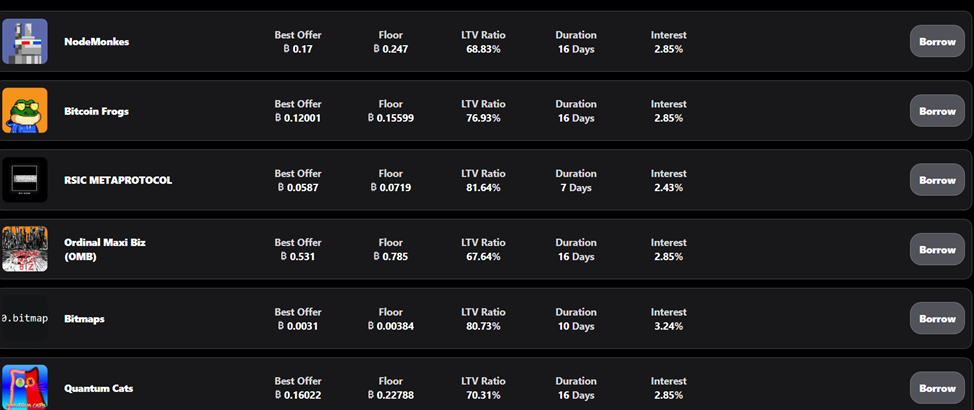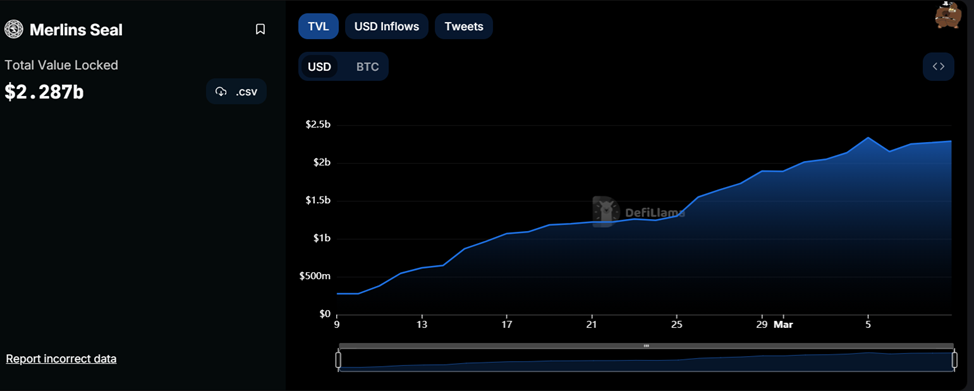Bitcoin, NFTs, and DeFi
Introduction
Ordinals are digital assets inscribed onto individual satoshis and attribute unique numbers to these satoshis. Inscriptions can be in many forms: text, image, video, code and so on. This piece focuses on three protocols enabling trading, lending, borrowing against or staking Ordinals.
Liquidium
Liquidium is a peer-to-peer BTC lending protocol. Users can borrow BTC by putting up their Ordinals as collateral. Liquidium accepts many popular Ordinals, RSIC Metaprotocol, Bitcoin Frogs, NodeMonkes, Ordinal Maxi Biz (OMB) among others as collateral. Loans are short-term; most have maturity of 7–12 days. Given such a short duration, for lenders it’s a relatively safe way to earn interest on their Bitcoin sitting idly in a wallet. If the borrower fails to repay the loan, the lender loses his BTC and gets the borrower’s collateral. Of course, nothing is safe in lending; for lenders on Liquidium the risk is that the floor price can fall and the borrower can choose to default on the loan. Let’s say, you lent 0.058 BTC against a RSIC Metaprotocol when floor price (FP) was 0.072. If FP drops to, say, 0.05 during the period that loan is active, the borrower has no incentive to repay 0.058 BTC plus interest for an asset which is worth 0.05 BTC. The actual loss for the lender will be 0.058–0.05 = 0.008 BTC. However, note that this may not be final PnL (profit and loss) if the lender doesn’t sell the Ordinal immediately because RSIC price can go up after some time. Furthermore, it’s worth repeating that this risk is negligible due to short duration of loans on the platform.
Let’s say, you lent 0.058 BTC against a RSIC Metaprotocol when floor price (FP) was 0.072. If FP drops to, say, 0.05 during the period that loan is active, the borrower has no incentive to repay 0.058 BTC plus interest for an asset which is worth 0.05 BTC. The actual loss for the lender will be 0.058–0.05 = 0.008 BTC. However, note that this may not be final PnL (profit and loss) if the lender doesn’t sell the Ordinal immediately because RSIC price can go up after some time. Furthermore, it’s worth repeating that this risk is negligible due to short duration of loans on the platform.
One benefit for borrowers has already been mentioned above: if you believe that FP of your Ordinal will decrease, you can borrow BTC against it and default on your loan. Think of borrowing against a particular Ordinal as shorting that Ordinal. You can also borrow to meet your short-term liquidity needs.
Finally, at the risk of diluting future airdrop potential of the protocol I want to say that since Liquidium is new and mostly unknown platform, by being an early and active user one can climb the leaderboard relatively easily.
OrdinalDAO
OrdinalDAO is an Ordinal lending protocol built on Rootstock, a Bitcoin sidechain. Unlike Liquidium which is a peer-to-peer marketplace, OrdinalDAO is building a peer-to-pool protocol. Peer-to-pool mechanism guarantees an instant fill while in a peer-to-peer lending protocol a borrower should confirm the loan if you decided to lend your Ordinal. Via OrdinalDAO, which is still in testing phase, Ordinal holders can stake assets and borrow rBTC, a wrapped version of BTC on Rootstock.
This is how it works. An Ordinal user chooses to stake into the pool, after which interest and loan amount are calculated based on the price data fetched from Ordex. Then funds are borrowed from Sovryn, a decentralized bitcoin trading and lending platform, and lent to the borrower. Users providing liquidty to OrdinalDAO earn yield on their rBTC.
Merlin Chain
Merlin is a Bitcoin Layer 2 with the aim to harness the potential of Bitcoin with native assets, protocols, and products. It was developed by Bitmap Tech, the team with building experience on Bitcoin. They have built the BRC-420 protocol and Bitmap.game which is an on-chain metaverse protocol. Merlin allows Bitcoiners to stake BTC, BRC-20 tokens, such as ORDI, SATS, RATS among others, and popular Ordinals, e.g., Bitcoin Frogs, Goosinals, Bitmap, Bitcoin Puppets and so on. Why Merlin Chain matters? Ordinals and inscriptions seem a daunting idea to users outside of Bitcoin blockchain. Several blocks can be spent on inscribing and even more blocks on its confirmation. Merlin removes the complexity of Bitcoin assets. Being connected to tens of EVM chains, it facilitates swapping USDT, ETH or other tokens with Merlin.
Merlin allows Bitcoiners to stake BTC, BRC-20 tokens, such as ORDI, SATS, RATS among others, and popular Ordinals, e.g., Bitcoin Frogs, Goosinals, Bitmap, Bitcoin Puppets and so on. Why Merlin Chain matters? Ordinals and inscriptions seem a daunting idea to users outside of Bitcoin blockchain. Several blocks can be spent on inscribing and even more blocks on its confirmation. Merlin removes the complexity of Bitcoin assets. Being connected to tens of EVM chains, it facilitates swapping USDT, ETH or other tokens with Merlin.
To ensure a fair launch of Merlin, an event called Merlin’s Seal has been created. It is Merlin’s Seal where you can earn M-points by staking Bitcoin assets. These points will be considered in the allocation of chain’s native token, $MERL which will go live presumably in April.
Conclusion
It is not an exaggeration to claim that Ordinals are just NFTs on Bitcoin. They enabled DeFi on the largest blockchain; most things that were deemed impossible for Bitcoin were enabled due to Ordinals. Different metaprotocols, multiple token standards, NFT lending on Bitcoin — these are some innovations that Ordinals enabled on Bitcoin. They brought fun to Bitcoin. Once they have become a hot topic, several protocols emerged to enable trading Ordinals. This article discusses some of these projects.









![[ℕ𝕖𝕧𝕖𝕣] 𝕊𝕖𝕝𝕝 𝕐𝕠𝕦𝕣 𝔹𝕚𝕥𝕔𝕠𝕚𝕟 - OM(G) , My Biggest Bag Was A Scam????](https://cdn.bulbapp.io/frontend/images/99de9393-38a8-4e51-a7ab-a2b2c28785bd/1)








































